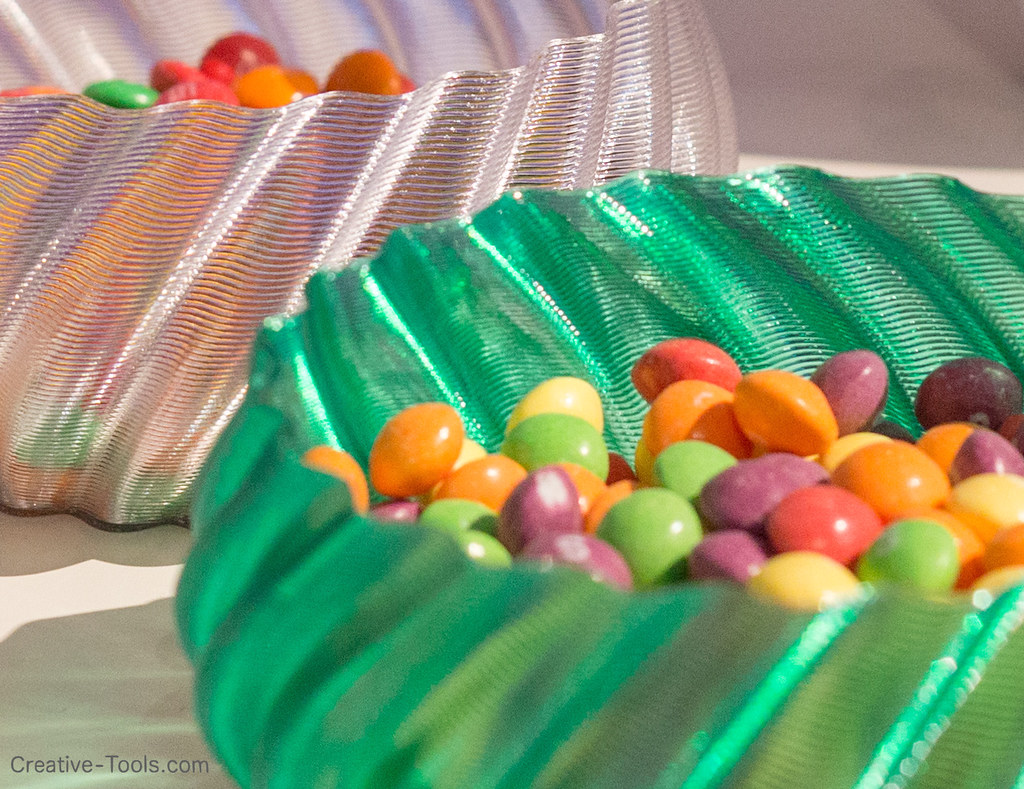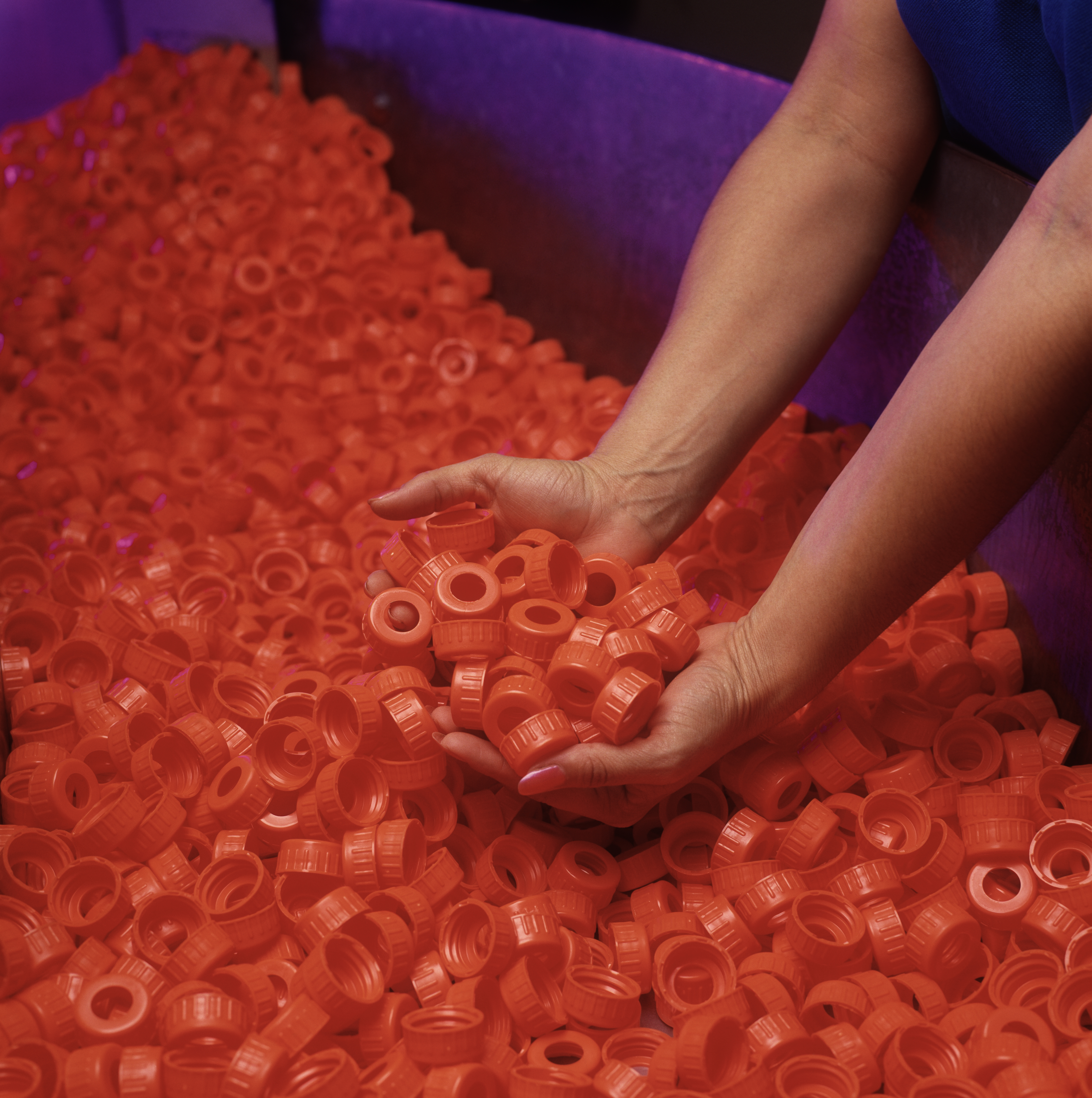3D printing is capable of creating many useful products, including some with food safe applications. However, 3D printing your design so that it is safe for food contact poses several challenges. In this article, we’ll discuss the caution areas of 3D printing food safe items, food safe FDM materials, and alternative manufacturing options. For the sake of simplicity, this article only focuses on FDM 3D printing.
Areas of Concern
Making sure a 3D printed object is food safe can be tricky. The following are a few areas of consideration to keep in mind when deciding to 3D print your part:
Bacteria
 With FDM 3D printing, layers are formed with rounded edges as the material exits the extruder. The layers stack and where they meet, small grooves form. These crevices are prime spots for bacteria to grow. There may also be additional spaces or cracks in the part if warping or curling occurs during printing. While it may seem logical to simply clean and disinfect the printed part, this is not so easily accomplished. Some materials cannot withstand hot water from a dishwasher and may deform or melt during the process. Instead, using mild soap and warm water may be effective, but may not be able to entirely rid the part of bacteria. As such, many 3D printed parts used for food contact are recommended to be single-use, disposable products.
With FDM 3D printing, layers are formed with rounded edges as the material exits the extruder. The layers stack and where they meet, small grooves form. These crevices are prime spots for bacteria to grow. There may also be additional spaces or cracks in the part if warping or curling occurs during printing. While it may seem logical to simply clean and disinfect the printed part, this is not so easily accomplished. Some materials cannot withstand hot water from a dishwasher and may deform or melt during the process. Instead, using mild soap and warm water may be effective, but may not be able to entirely rid the part of bacteria. As such, many 3D printed parts used for food contact are recommended to be single-use, disposable products.
The risk of bacteria growth may be reduced by smoothing your part in post production by either sanding or chemical smoothing. An added precaution you make take to combat this bacteria build up is by coating your part with food safe sealant or epoxy. This will help cover and smooth crevices that may be hiding bacteria. However, the coating will not necessarily make your part food safe long term because multiple-use items can be scratched or damaged and expose the plastic below the sealant. Regardless of the smoothness and coating condition of your print, it is recommended to never use it with raw foods, such as fish, meat, or eggs. It is also important to note that no part can ever be guaranteed 100% food safe even with coating.
Chemicals
Harmful chemicals found within the part itself can also cause problems with food safety as they can transfer to food they touch. For this reason, it is important to know your material well before 3D printing your design. For example, although a material may be certified for food use, it may have other grades available with strengthening additives or color pigments added that may contain chemicals. Furthermore, you should ensure that your filament is stored separately and/or sealed to prevent cross-contamination by other neighboring filament spools.
 Even if your material is chemical-free in its filament state, chemicals can leach into your part during the printing process as well. Some materials may require a sturdier print nozzle to print correctly, such as brass or stainless steel. With brass nozzles, however, you run the risk of lead contamination as the brass nozzle will heat up and may transfer lead into your part as it prints. Even with stainless steel or other print heads, you must be careful of cross-contamination. A print head that has run a material not suitable for food contact in the past could have residue left from that print, which could contaminate your current project with its chemicals. For this reason, it is best to have one print nozzle solely dedicated to food safe printing. Finally, some FDM materials are liable to produce UFPs (Ultrafine Particles) during printing, which may rest on the part if the area is not properly ventilated. These are not to be inhaled or consumed.
Even if your material is chemical-free in its filament state, chemicals can leach into your part during the printing process as well. Some materials may require a sturdier print nozzle to print correctly, such as brass or stainless steel. With brass nozzles, however, you run the risk of lead contamination as the brass nozzle will heat up and may transfer lead into your part as it prints. Even with stainless steel or other print heads, you must be careful of cross-contamination. A print head that has run a material not suitable for food contact in the past could have residue left from that print, which could contaminate your current project with its chemicals. For this reason, it is best to have one print nozzle solely dedicated to food safe printing. Finally, some FDM materials are liable to produce UFPs (Ultrafine Particles) during printing, which may rest on the part if the area is not properly ventilated. These are not to be inhaled or consumed.
Length of Contact
Your part’s intended application will be a primary factor when it comes to choosing your material. Items intended for prolonged contact, such as cups, plates, or food storage containers, should use certified food safe plastic only, whereas brief contact items, such as utensils or cookie cutters, may be able to use non-certified food grades. This is because chemicals take time to leach into food, so the shorter contact time greatly reduces the risk of contamination.
Food Safe FDM Materials
The best materials for food safe products are those with resistance to the oils and acids found in some foods and a lack of harmful chemicals. For FDM 3D printing, there are several materials that are either FDA-certified or passable for food contact. These include PLA, PET, ULTEM, Polycarbonate, Polypropylene, PEEK, and natural grade Nylon. Some of these, such as PET, Polycarbonate, and Polypropylene are more commonly blow molded for use as water bottles or other disposable bottles. Keep in mind that PLA will not tolerate elevated temperatures, and, therefore, should not be used for hot foods or beverages and is not microwave or dishwasher safe.
Alternatives to FDM 3D Printing
 Even though FDM is able to print food safe materials, it may not necessarily be the best choice for your project. It and other 3D printing methods, such as SLS and SLA, will always produce parts that need extra post processing due to crevices, porosity, or powders affecting the safety of the printed part. In addition to this, 3D printing is best suited for small volume production, so if you need a large quantity of your product, it may be best to choose a different manufacturing route.
Even though FDM is able to print food safe materials, it may not necessarily be the best choice for your project. It and other 3D printing methods, such as SLS and SLA, will always produce parts that need extra post processing due to crevices, porosity, or powders affecting the safety of the printed part. In addition to this, 3D printing is best suited for small volume production, so if you need a large quantity of your product, it may be best to choose a different manufacturing route.
The most popular manufacturing options for food safe products are injection molding, thermoforming, and blow molding. These processes produce many of the mass market food safe products we use today, such a plastic utensils, water bottles, food packaging, and storage containers. These products are more reliably food safe from the start simply due to the lack of layer lines creating pockets for bacteria.
Manufacturing at 3 Space
Here at 3 Space, we offer multiple manufacturing services, including 3D printing, injection molding, and thermoforming. Our expert engineers are happy to help advise you on technology and material choices as well as provide design aid. For more information, contact us today.
